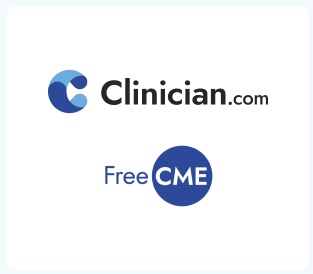
Continue Learning with FreeCME
Clinician.com and FreeCME Account Successfully Created
Your new Clinician account also gives you access to FreeCME, where you can take free accredited for CE credit

Your new Clinician account also gives you access to FreeCME, where you can take free accredited for CE credit
July 1, 2025 3 minutes read
By Jake Scott, MD
Synopsis: Pre-incision treatment did not reduce intra-operative perforation, and likewise did not change purulent contamination, peri-appendicular abscess, or histologic gangrene. It did lower 30-day surgical-site infection (SSI) (1.6% vs. 3.2%; P = 0.03) and re-intervention for SSI (0.3% vs. 1.1%), but the effect was marginally significant, giving a number-needed-to-treat of 63 for any SSI and 125 for a re-intervention.
Source: Jalava K, Sallinen V, Lampela H, et al. Role of preoperative antibiotic treatment while awaiting appendectomy: The PERFECT-Antibiotics randomized clinical trial. JAMA Surg. 2025;May 14:e251212. doi:10.1001/jamasurg.2025.1212. [Online ahead of print].
The trial, conducted at two Finnish teaching hospitals and one Norwegian teaching hospital between May 2020 and January 2023, enrolled adults ≥ 18 years of age with an Adult Appendicitis Score ≥ 16 or imaging-confirmed uncomplicated disease.1 Exclusions included prior antibiotics, pregnancy, fever > 38.5 °C or C-reactive protein (CRP) ≥ 100 mg/L, imaging evidence of perforation, antibiotic allergy, or need for urgent surgery. All patients received a single prophylactic dose at induction of anesthesia. Pathologists were masked to allocation. Baseline characteristics were balanced (median age 35 years; 45% female; > 80% imaging-confirmed appendicitis; appendicolith on one-third of computed-tomography [CT] scans). Median in-hospital delay to incision was nine hours (interquartile range, 4-16).
The primary outcome was American Association for the Surgery of Trauma grade 3-5 perforation, which occurred in 74 of 888 patients (8.3%) given antibiotics and 79 of 886 patients (8.9%) without antibiotics (absolute difference, 0.6 percentage points; 95% confidence interval [CI], –2.0 to 3.2; P = 0.66), satisfying the five-percentage-point non-inferiority margin. Secondary endpoints favored the antibiotic arm only modestly: any SSI 1.6% vs. 3.2% (absolute difference, 1.6 percentage points; 95% CI, 0.2-3.0; P = 0.03) and intra-abdominal infection 0.7% vs. 1.9% (P = 0.02). There were no differences in purulent peritoneal contamination, peri-appendicular abscess, histologic gangrene, overall postoperative-complication rate, or hospital stay. Positive blood cultures were more frequent without antibiotics (0.9% vs. 0.1%).
Observational data from a large Washington-state registry (9,048 adults) showed no association between in-hospital delay and perforation risk, a finding echoed by PERFECT-Antibiotics, which likewise found no perforation benefit from early broad-spectrum coverage.2 The World Society of Emergency Surgery 2020 guideline recommends a single pre-incision dose for uncomplicated appendicitis and discourages postoperative antibiotics.3 A Cochrane systematic review limited to appendectomy concluded that one preoperative dose is as effective as extended regimens for preventing postoperative infection.4 These sources align with the PERFECT-Antibiotics finding that additional hours of broad-spectrum coverage confer little clinical value.
Luminal obstruction by a fecalith is seen in less than half of modern CT series, and inflammation often precedes obstruction, suggesting that short antibiotic courses during brief in-hospital waits are unlikely to halt disease progression.5 The investigators calculated a number-needed-to-treat of 63 to prevent any surgical-site infection (SSI), 83 to prevent an intra-abdominal infection, and 125 to prevent an infection-related re-intervention — figures that underscore how little clinical gain is achieved at the cost of added antimicrobial exposure and resistance risk. Limitations of the PERFECT-Antibiotics trial include the open-label design and exclusion of complicated appendicitis, pediatric patients, and pregnancy. Centers with very high baseline SSI rates may judge a 1.6-percentage-point reduction worthwhile, but for most institutions a single-dose strategy appears sufficient.
Jake Scott, MD, is Clinical Associate Professor, Infectious Diseases and Geographic Medicine, Stanford University School of Medicine; Antimicrobial Stewardship Program Medical Director, Stanford Health Care Tri-Valley.
References
1. Jalava K, Sallinen V, Lampela H, et al. Role of preoperative antibiotic treatment while awaiting appendectomy: The PERFECT-Antibiotics randomized clinical trial. JAMA Surg. 2025;May 14:e251212. doi:10.1001/jamasurg.2025.1212. [Online ahead of print].
2. Drake FT, Mottey NE, Farrokhi ET, et al. Time to appendectomy and risk of perforation in acute appendicitis. JAMA Surg. 2014;149(8):837-844.
3. Di Saverio S, Podda M, De Simone B, et al. Diagnosis and treatment of acute appendicitis: 2020 update of the WSES Jerusalem guidelines. World J Emerg Surg. 2020;15(1):27.
4. Andersen BR, Kallehave FL, Andersen HK. Antibiotics versus placebo for prevention of postoperative infection after appendicectomy. Cochrane Database Syst Rev. 2003;(2):CD001439.
5. Singer M, Deutschman CS, Seymour CW, et al. The Third International Consensus Definitions for Sepsis and Septic Shock (Sepsis-3). JAMA. 2016;315(8):801-810.
Pre-incision treatment did not reduce intra-operative perforation, and likewise did not change purulent contamination, peri-appendicular abscess, or histologic gangrene. It did lower 30-day surgical-site infection (SSI) (1.6% vs. 3.2%; P = 0.03) and re-intervention for SSI (0.3% vs. 1.1%), but the effect was marginally significant, giving a number-needed-to-treat of 63 for any SSI and 125 for a re-intervention.
You have reached your article limit for the month. Subscribe now to access this article plus other member-only content.